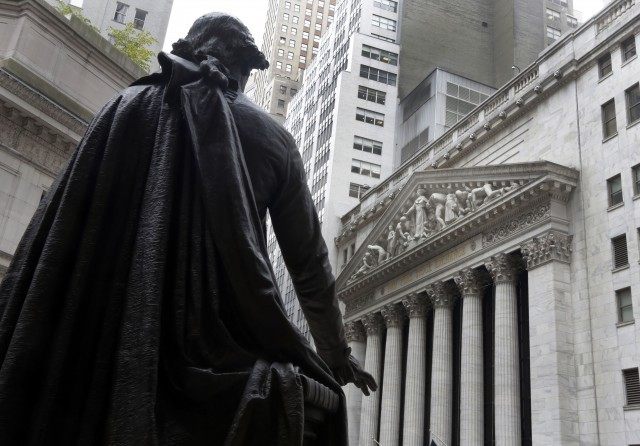Silicon Valley is again “champagne style and caviar wishes” as people around the world paid $18,000 for Apple watches last week. But with Moore’s Law predicting computer power will double annually as prices fall now turning 50 years old, it is helpful to put in perspective that the NASDAQ Index dominated by “Valley” tech stocks that has almost tripled since 2010 to 4931, is a couple of percent short of its Dot-Com Bubble peak of 5132 in March 2000. But adjusted for inflation, the NASDAQ still is still down 34 percent.
Despite Silicon Valley tech IPOs now called “Wall Street’s backbone and ATM,” US stocks this year are the worst internationally, with just a +1.08 percent gain. Stock markets are up 15 percent in Europe, and China leads with a +32.54 percent leap in 2015.
Supposed experts say NASDAQ speculative excess from a valuation standpoint is not anywhere near where it was at the peak of the Dot-Com Bubble. The market value of NASDAQ stocks divided by their earnings (P/E ratio) was 175 in 2000. At about a 32 P/E ratio today, valuation is roughly the same as the past two decades. But during the 19-month Dot-Com Burst, the average stock lost -83 percent of its value.
The “weighting” of Information Technology companies in the total value of the Standard & Poor’s 500 index grew from 6.3 percent in 1990, to 29 percent in the 2000 boom, down to 11 percent in the bust, and then back up to a potentially frothy 20 percent weighting today.
The San Jose Mercury News has just published its 30th annual SV150 Index, which tallies the 150 largest Silicon Valley companies by revenue. The newspaper commented, “it’s clear that Wall Street depends on Silicon Valley tech companies like never before.”
Only six of the SV150 Index companies from three decades ago are still listed on the S&P’s 500 Index, which tracks America’s biggest firms. Today there are 30 companies that are in both indexes, and information technology is the S&P’s biggest sector. In a bow to reality, Apple Computer is also on the Dow Jones Industrial Average.
SV150 companies over the last year had an average profit margin of 16.4 percent on record sales and profits. But the $134.4 billion SV150 companies distributed in dividends and stock buy-backs to shareholders exceeded their $128 billion in profits.
Beacon Economics founding partner Chris Thornberg told the Mercury, “We’re seeing record profits today, unlike in the 1990s when you had huge valuations but nobody making the money to justify them, he said. “Back then, people were selling the IT and investors were buying it, but it wasn’t being integrated into our lives very well.”
That type of rah-rah language is eerily reminiscent of what bullish “experts” said in 2000–namely, that technology innovation would not slow down. Innovation actually accelerated, but the Dot-Com crash bankrupted a ton of Silicon Valley companies and caused a decade-long spike in Silicon Valley unemployment.
Perhaps more foreboding now is how much of Silicon Valley’s growth comes from selling Apple watches and other “stuff” in China. McKinsey Consulting’s “Global Institute” last year said in an article titled “Dragon Net: China’s next economic miracle” said China was sustainable, despite a slowdown after two decades of heavy capital investment and labor force expansion, because the government had decided to leverage the size of its domestic market to dominate future disruptive digital development.
McKinsey points out that with 642 million Internet users and 700 million smartphone users, China has been the world’s largest e-tailing market, “with almost $300 billion in sales posted in 2013.” Dragon Net’s infrastructure initiative is on track to achieve 50 percent household broadband penetration and 32.5 percent 3G/LTE coverage in 2015.
The SV150 companies last year saw a +23.8 percent jump in overall profits, a +11.7 percent rise in sales, and a +7.1 percent increase in job growth to help California capture the America’s fourth strongest economy.
But there is a problem with experts starting to talk about sustainable Silicon Valley booms: such talk usually happens just before a bust.

COMMENTS
Please let us know if you're having issues with commenting.